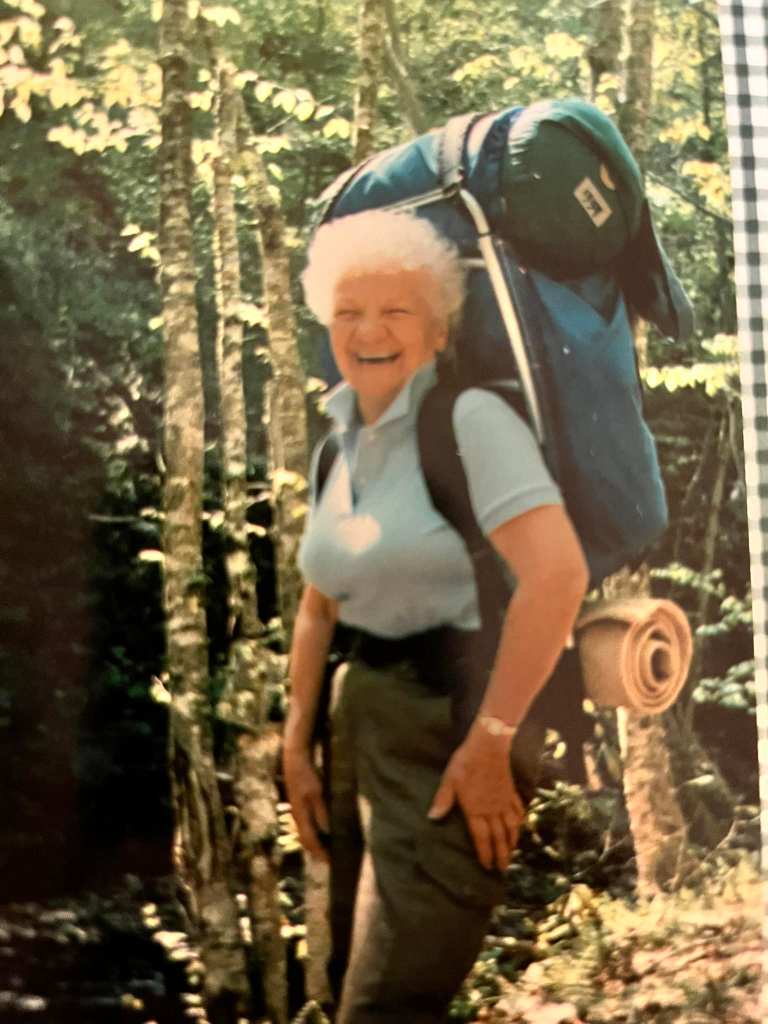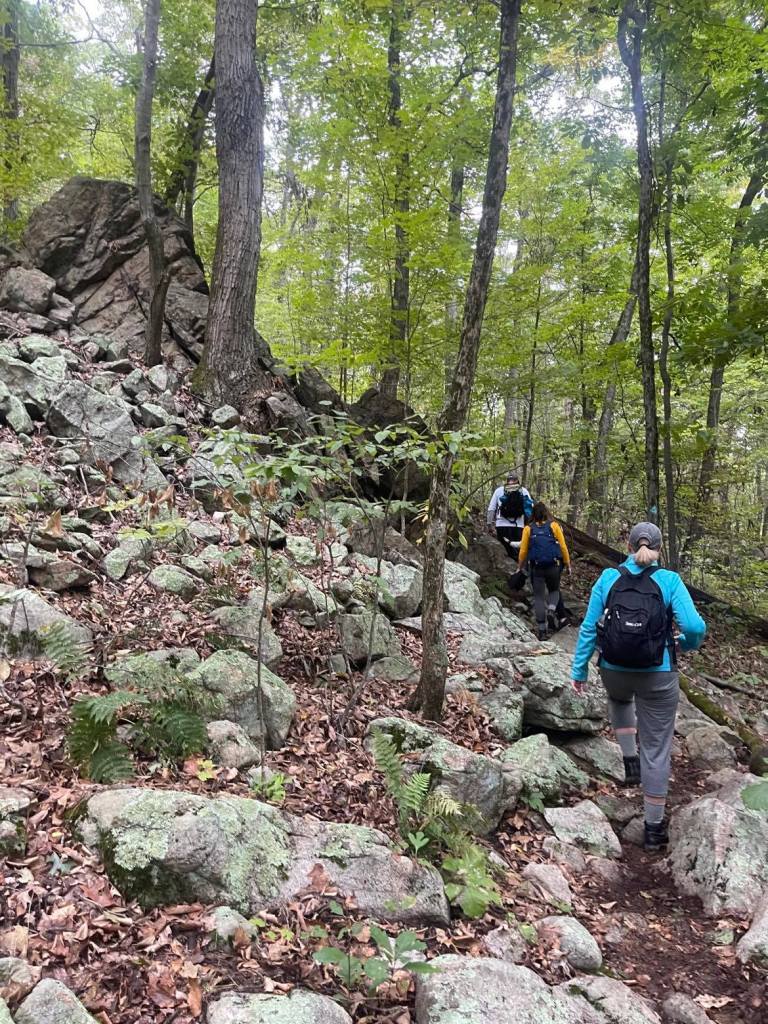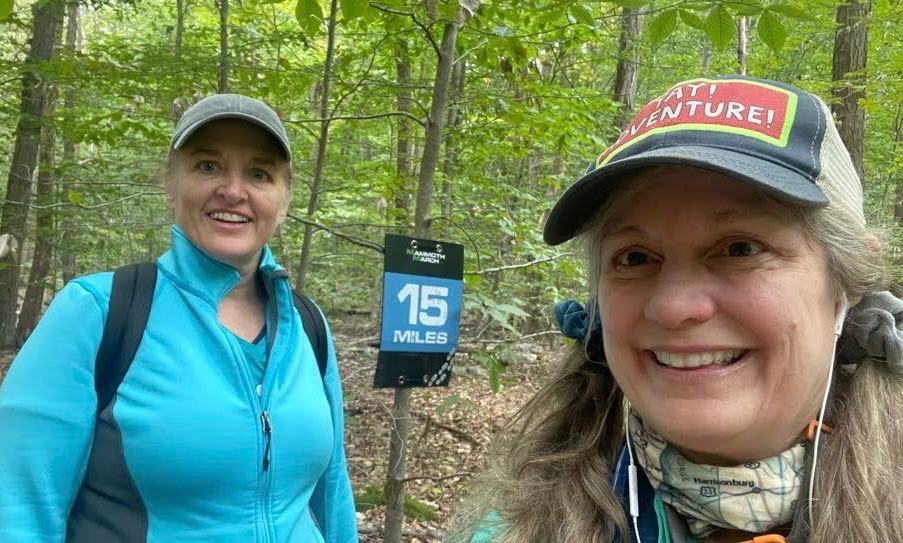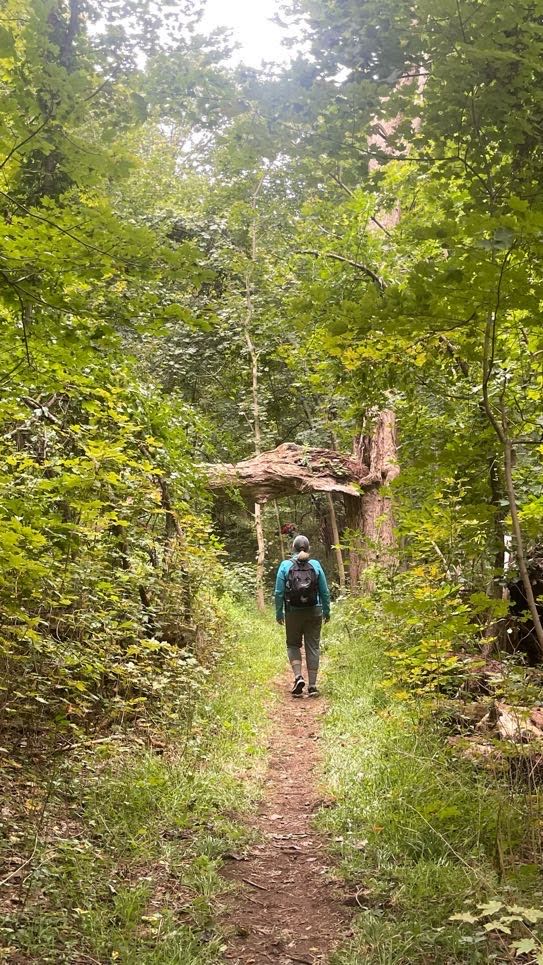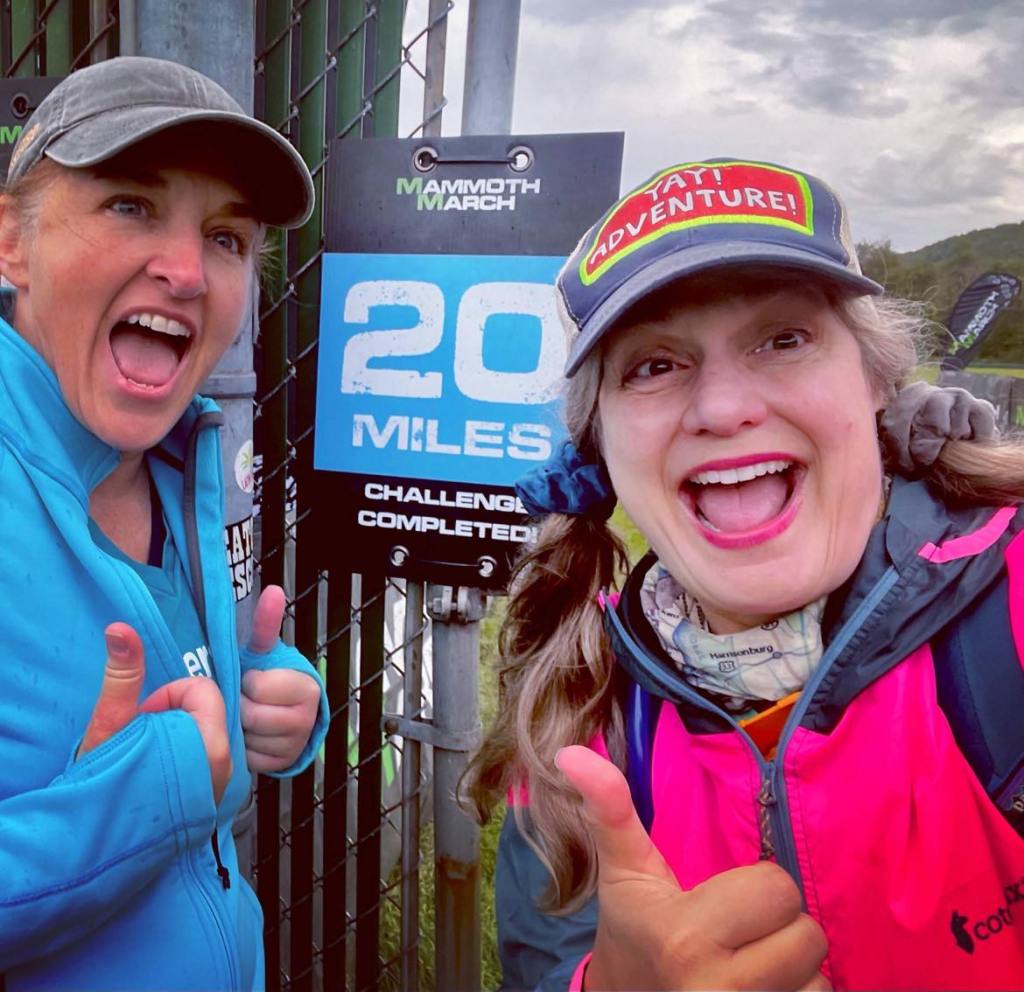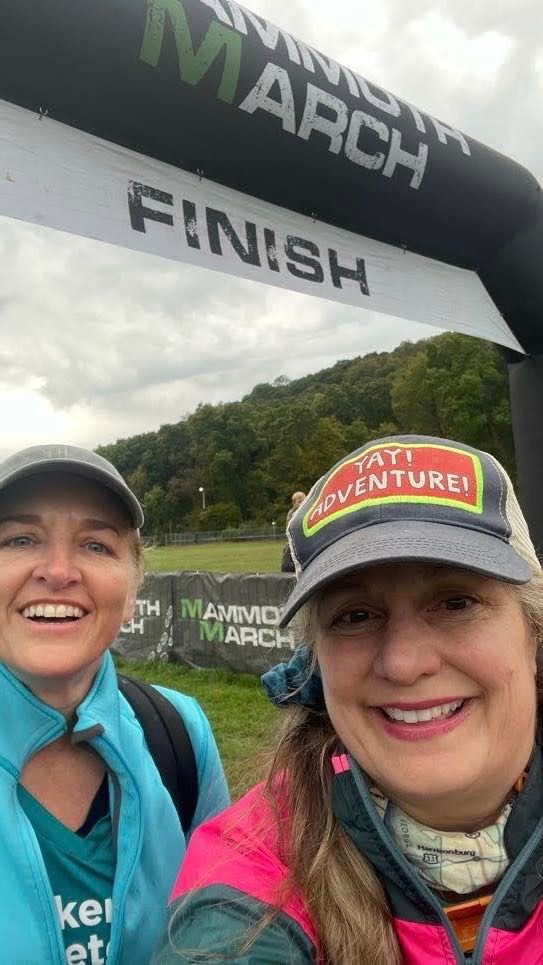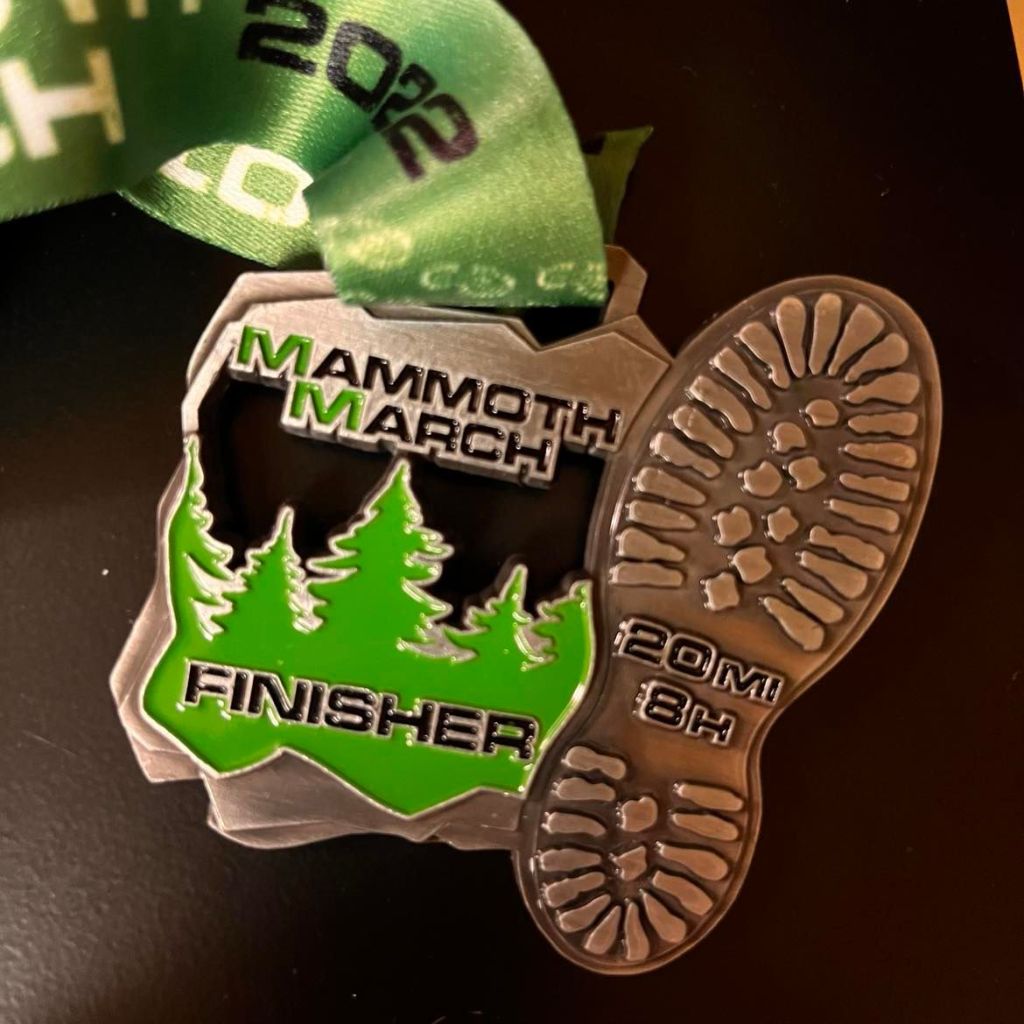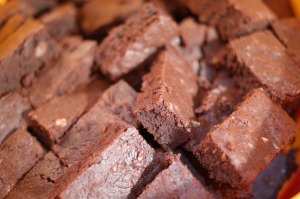
It’s frankly been quite awhile since I’ve really physically challenged myself (or posted here!), but I made up for it last weekend with a lengthy, strenuous hike.
My Gram, who was my inspiration for my past marathoning, died late last year at 100 + 1 month. My friend Sue proposed doing the 20-mile option of the Mammoth March NJ in her honor/memory, as Gram was an avid hiker (and skier, backpacker, biker, camper). I immediately said yes. The route followed trails in parks that I know she had hiked on.
What a great way to honor her! She would be with me on the course in more ways than one.
The Mammoth March is not a race but does have a time limit of sorts (8 hours for the 20-mile option, which works out to less than a 3 mph pace). I haven’t done any races since 2018. We signed up for the March at the turn of the year, so I certainly had time to train and prepare.
I felt confident that I could complete the mileage and persevere, but I was nervous about the terrain/elevation — all my marathon walking over the past many years has been very flat and very paved. And that said, I didn’t train as I should have, other than doing several lengthy (flat) walks and some last-minute treadmill incline work. (Sue, conversely, was concerned about the distance but not the elevation as she is a very frequent hiker.)
We did a test hike a few weeks before the event, 13 miles on part of the actual course. We found that our pace was compatible and we were a good team, but the trek took us … well, let’s just say an unusually long time. So we had concerns that we’d finish the 20 miles in the allotted 8-ish hours, especially this time of year when the days are shorter.
On the day of, I broke a cardinal rule of distance events (don’t wear/try anything new!). Weather conditions prompted me to make a game-day decision to start the hike in a pair of not-really-hiking-boots instead of the sneakers I’d worn for the test hike.
I paid the price for my rule-breaking. I started feeling a hot spot on my heel about 4 miles in, and even with switching to sneakers (which I’d smartly stashed in my backpack) at mile 5, the damage was done and I had a quarter-size blister, already popped and the skin rubbed away. Amen for some awesomely effective blister patches available at the aid station, which got me through to the finish without debilitating pain (but which didn’t stop the doubling in size of the blister).
The many fellow hikers on the March were all so friendly and helped us keep our pace and our spirits up! The course was well marked and varied, and the aid stations had the right combo of refreshments (hot soup at mile 16 was so welcome on a dreary, trying-to-rain autumn day).
In the first half of the mileage, my hamstrings started feeling tight and stressed. In the second half of the route, that faded as my knees — due to some of the downhills that required careful maneuvering — started to ache. Throw in the heel blister threatening to derail things and I was really watching for the mile markers. We were so grateful to have a wide, flat, fine-graveled road for a stretch of a few miles on the back end. However, a detour back into the woods on narrow trails came along between miles 17 and 18, and with it the hardest part of the course — a tricky long downhill, during which my knees started to scream and each step was fairly unpleasant. Talk about moving gingerly!
I knew I wouldn’t give up. I knew I had it in me. But I knew this was asking more of my body than I have in quite a long time.
As we neared the last mile or so, Sue got a second wind and was energized by the approaching finish line. I, on the other hand, seem to start to fade when I know the end is near, and so the last mile felt like it went on forever. But I was so very glad that the last mile was flat, soft, and rock-free!
We finished the course in less than 8 and a half hours (not counting stops), with a total elevation gain of 2,352 feet, and proudly and joyfully accepted our medals.
So… back to Gram. I called on her at several points during the day, both for stamina to keep going and in wanting her to appreciate the trail, the scenery, the event. And I carried her with me, literally, and left her behind as well, to be forever a part of trails she loved.
I can’t thank Sue enough for suggesting this as a way to honor my beloved, inspirational grandmother, and I can’t thank Gram enough for instilling her put-one-foot-in-front-of-the-other attitude in me. (And for keeping the course under an umbrella, while it apparently rained all day pretty much everywhere around us.) I just wish we’d done more hiking together and that I shared her outdoors spirit earlier in life.

